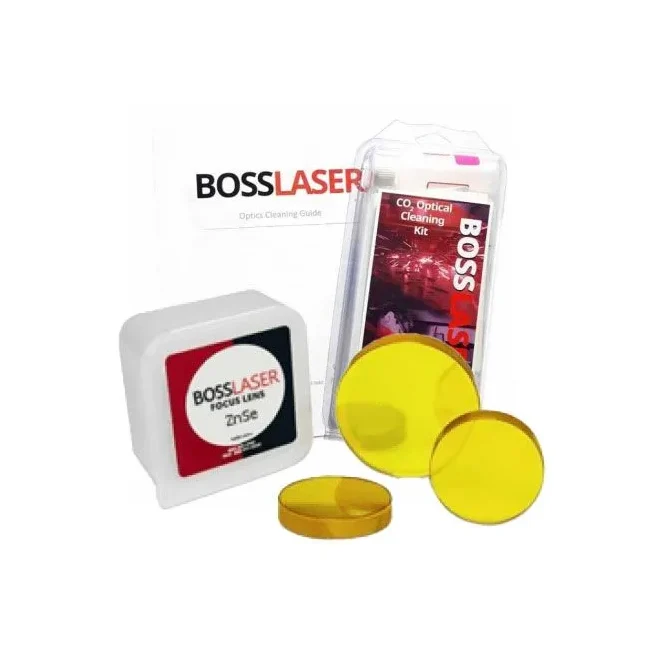Focal length is the distance between the laser lens and the surface of the material being processed; determining the correct one depends on your application(s). For general purposes, a 2.5″ focal length is popular because it balances engraving precision and cutting depth.
What to Know About CO2 Laser Lens Focal Lengths
How to choose the correct focal length
- SHORTER FOCAL LENGTHS: Smaller spot size for more detailed engraving.
- LONGER FOCAL LENGTHS: Deeper depth of field for cutting thicker materials.
Boss Laser offers CO2 lenses with 2″, 2.5″, and 4″ focal lengths. Premium ZNSE lenses made in the USA are also available, providing a 14% transmission rate improvement.
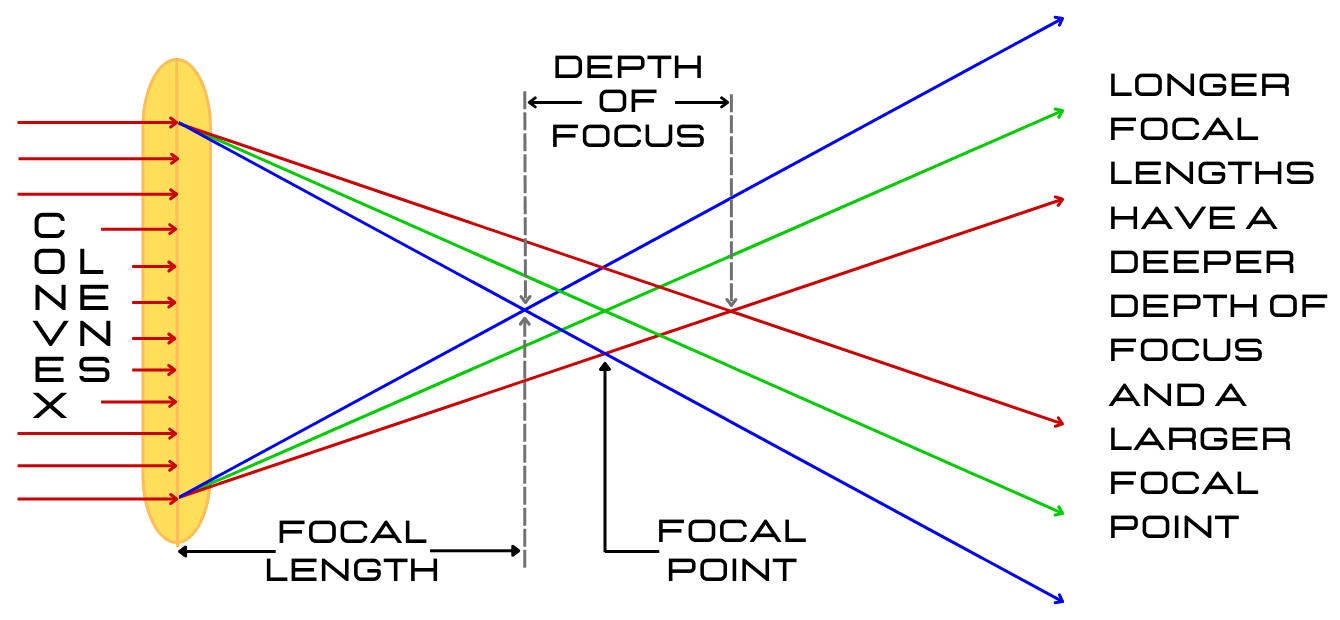
Depth of Focus Explained
The focus tolerance, also known as the depth of focus, refers to the zone around the focal point where the beam remains effectively narrow. This focus depth increases with larger lenses, which is especially important when cutting through thick materials. The shorter the lens focal length, the quicker it will converge/diverge, resulting in a smaller focal spot.
The diameter of the laser beam does not stay constant throughout its depth of focus. Instead, it converges to its smallest diameter at the focal point, where the beam’s power density is highest. Above and below the focal point, the beam widens, decreasing in power density.
Factors such as the laser’s wavelength, the focusing lens’s focal length, and the initial beam diameter influence this. High-quality laser machines, like those from Boss Laser, provide precise focus control, enabling optimal processing across different materials and applications.
Common CO2 Laser Lens Focal Lengths
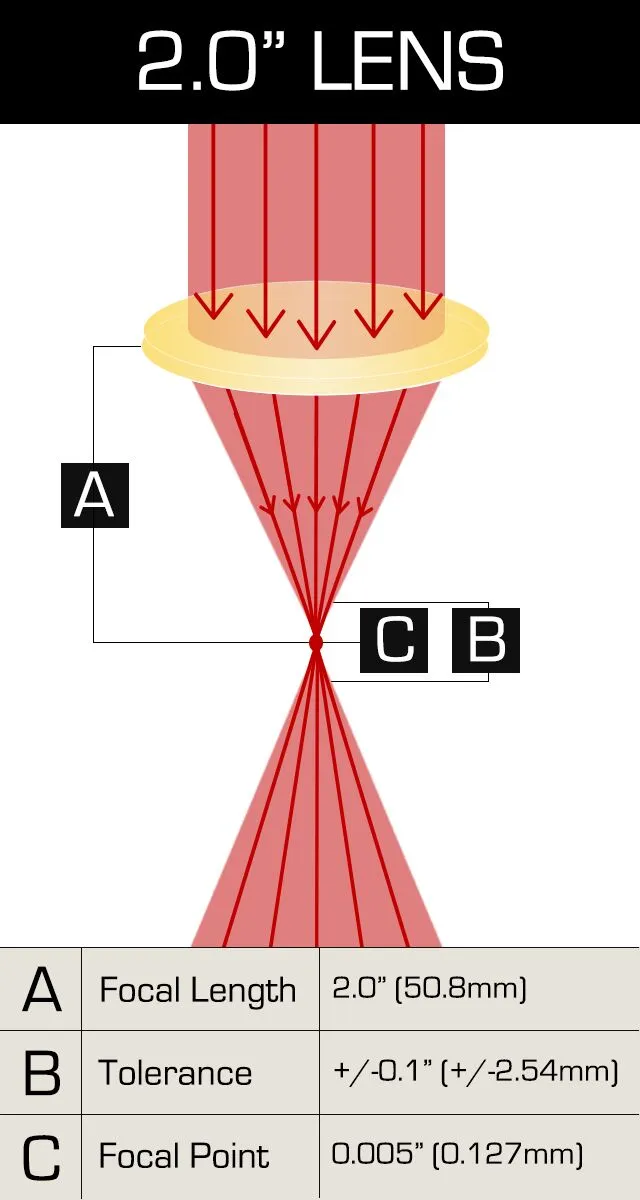
2″ FOCAL LENGTH LASER LENS
Use Cases: Ideal for high-precision engraving and cutting of thinner materials. The shorter focal length produces a smaller spot size, resulting in finer detail.
Benefits:
- Excellent for intricate engraving, offering superior detail and resolution.
- Good for cutting materials up to about ¼ inch thick, providing clean edges and faster speeds on thinner materials.
Drawbacks:
- Limited depth of focus, meaning the material needs to be very flat for optimal results.
- Not ideal for thick material cutting, as the shorter focal length limits the beam’s ability to penetrate deeply.
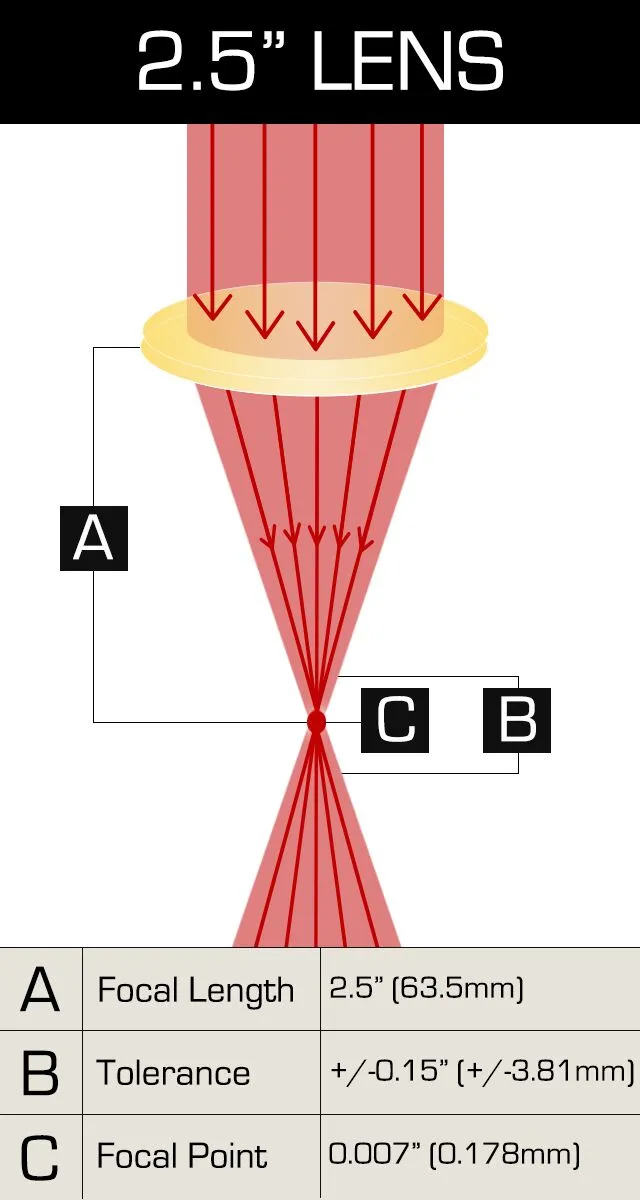
2.5″ FOCAL LENGTH LASER LENS
Use Cases: A versatile choice that balances engraving and cutting capabilities. It’s suitable for a broader range of material thicknesses and applications.
Benefits:
- Offers good detail for engraving while being more forgiving on slightly uneven materials compared to the 2″ lens.
- Better suited for cutting materials of medium thickness, up to about ½ inch, with a good balance of speed and edge quality.
Drawbacks:
- While versatile, it may not provide the same level of fine detail as the 2″ lens for very intricate designs.
- Not the best option for very thick materials, where a longer focal length would be more efficient.
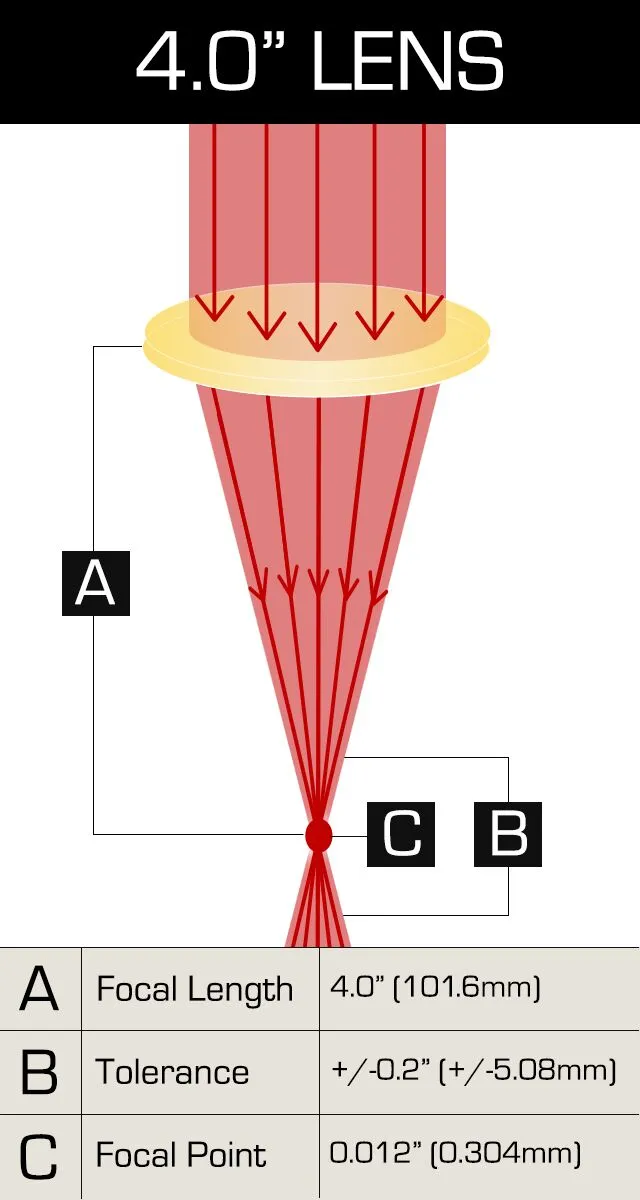
4″ FOCAL LENGTH LASER LENS
Use Cases: Designed for cutting thick materials. The longer focal length allows the laser beam to maintain focus over a greater depth, enhancing its ability to cut deeply.
Benefits:
- Ideal for cutting thick materials, offering better edge quality and the ability to cut through materials over ½ inch thick.
- More forgiving on surface irregularities, making it suitable for materials that are not perfectly flat.
Drawbacks:
- The larger spot size reduces the detail achievable in engraving applications.
- Cutting speed may be slower on thinner materials than shorter focal lengths.
FINER DETAILS VS. THICKER CUTS
When choosing a CO2 laser lens, it is important to consider the requirements of process. Boss Laser offers three lens options: 2″, 2.5″, and 4″. The 2″ lens is ideal for intricate engraving and can cut materials up to ¼” thickness. The 2.5″ lens is the most commonly used option and provides a balance between detailed engraving and the ability to cut materials up to ½” thickness. The 4″ lens is recommended for cutting materials over ½” thickness with high efficiency.
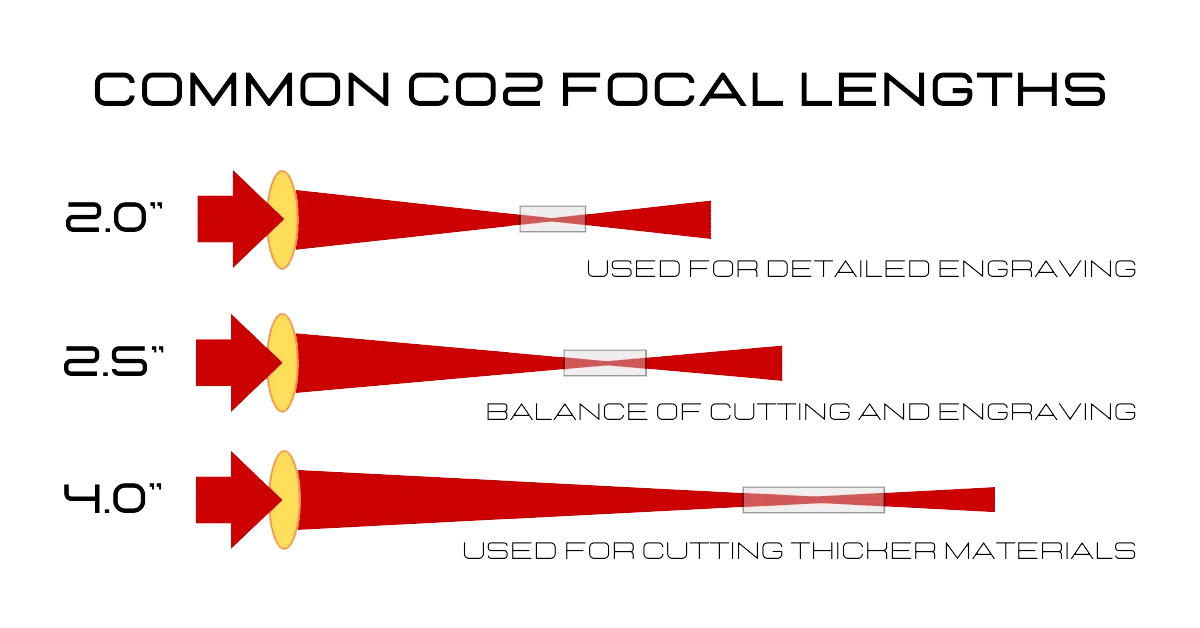
What Focal Length is Best?
There is no “best” focal length!
The optimum focal length depends on the application. 2.5″ is the most common, balancing the ability to engrave fine details with the ability to cut materials up to 1/2″.
Lenses are easy to change, so many users keep more than one focal length on hand for increased material processing capabilities.
